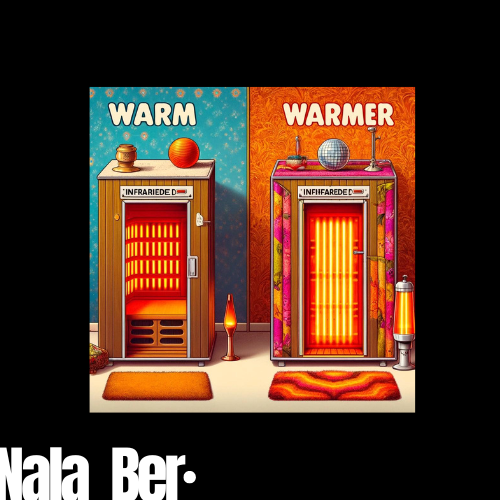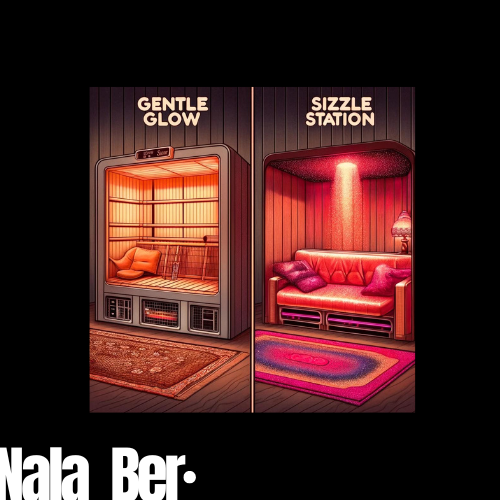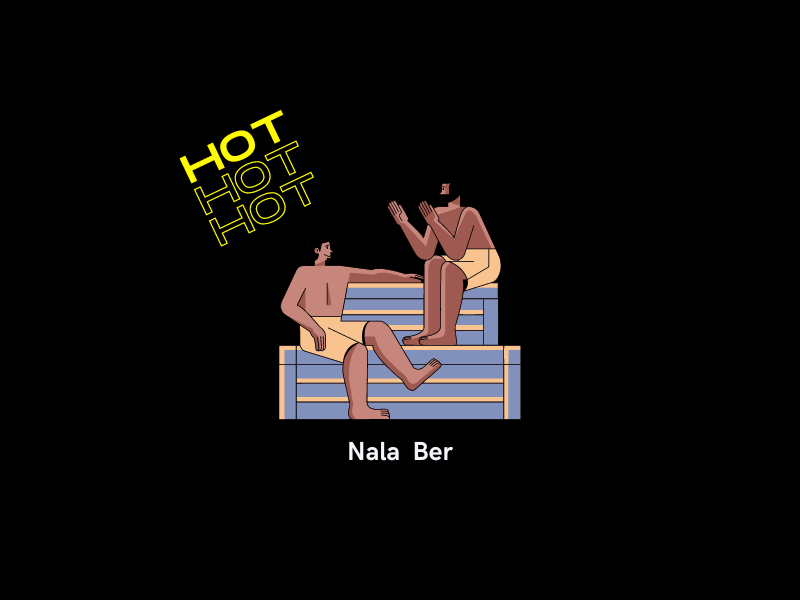How hot should an infrared sauna be before its dangerous
Ever feel like a frozen dinner in your infrared sauna? Lost the packet and don’t know how hot you should be cooked? Well, you can relax now. There’s no need to thaw out on me.
The age-old question is, how hot should an infrared sauna be? You can’t go too far wrong with this, but if you do, you will know all about it.
I have done all the dirty work, so you don’t have to; follow me as I walk you through what I have learned.
What Is An Infrared Sauna?
An infrared sauna uses infrared light to heat your body directly; this is different to traditional saunas, which warm the air, increasing the room temperature.
Deeper penetration is the aim of the game here. At a lower heat, which actually makes the experience more comfortable, you will still get all the benefits of detoxification and relaxation.
So, in short, they are both very similar. Same, same, but different!

Why Infrared Sauna Temperature Matters?
Choosing the right temperature is crucial not only for comfort, but so you can also reap all the potential health benefits like improved blood circulation and pain relief.
The temperature range can also affect how your body recovers after exercise. Infrared heat has been shown to aid in the muscle growth process and reduce aches and pains. I swear by an infrared sauna. I train five times a week and don’t believe this would be as easy as it is without it!
Experts’ Advice on Finding Your Ideal Sauna Temperature:
1: The Ideal Range:
- Get the best bang for your buck in terms of your infrared sauna temperature. Aim for around 110°F and 130°F (43°C to 54°C). This range is enough to get a good sweat without overwhelming your body or core temperature.
- I would hover around the 120°F mark; this is the sweet spot. Everyone is different, so understand your limits and what works for you. Your body knows best!
2: Duration Matters:
- How long we stay in an infrared sauna is important for safety and the benefits.
- The aim of the game here is to increase over time and try different temperature ranges. Eventually, you want to make it up to 20 – 30 minutes.
3: Listen to Your Body:
- We are all different in terms of tolerances. It’s important to know this, especially if you are having an infrared sauna session with friends. It’s not a completion!
- Always start at the lower end of the temperature range and gradually increase to find what feels best for you. This post will only take you so far; your body will take you the rest!
4: Frequency for Maximum Benefits:
- Optimal frequency depends and how far on you are in your infrared sauna journey. This is a process, leveling up each time we step inside one.
- Eventually, getting up to 3 to 4 times a week can help you reap all the health benefits like weight loss and an improved immune system.

Key Considerations For Successfully Heating Up
It’s a common misconception that we jump straight into high temperatures, hoping to see the benefits sooner. Here, we must exercise caution and understand that it takes time to see the benefits.
Stay hydrated and listen to your body at all costs, you always have the option to adjust the temperature ranges. If your leaving the sauna feeling exhausted you have overdone it. The idea is to feel rejuvenated!
Once I feel like I’m starting to cook and my thoughts get a bit blurred, I get out immediately, even if it’s in the first few minutes.

Taking It to the Next Level: Customizing Your Experience
An infrared sauna comes in many forms. You can choose from FAR, MID, or near-infrared, each offering unique benefits.
When taking it to the next level, you need to be armed with the below lingo; it will get you far:
Glossary:
1: Far Infrared Heat:
- Deep-penetrating, sun-like warmth without UV radiation, efficiently heating objects and bodies directly.
2: Infrared Wavelengths:
- Invisible segments of the electromagnetic spectrum, experienced as heat, are crucial for infrared heating technology.
3: FIR Heaters:
- Devices that emit far infrared heat, efficiently warm objects and people without heating the air
4: Near Infrared Light:
- Near-infrared (NIR) can penetrate skin and tissues, potentially aiding in recovery and cell health.
5: Low EMF Output:
- These heaters emit minimal electromagnetic fields

Alternatives to the Traditional Heat of an infrared sauna
You can always try infrared sauna blankets; they differ from standing in an actual sauna and are also great for travel.
I bring it with me all the time. I even used it as a bag once to transport all my items from one city to the next!
Wrapping Up: My Experience With Infrared Saunas
Jumping into the world of infrared saunas has been transformational for my wellness routine. We need to strive to master the delicate art of not becoming a baked potato.
An infrared sauna is definitely nuanced; there are lots of ways to do it and also plenty of ways not to do it. It’s just about arming yourself with the right information and picking the best one.
So, now that you are up to speed with how hot your infrared sauna should be, go and spread the word in the hope we have fewer baked potatoes in the world and more half-cooked chickens



